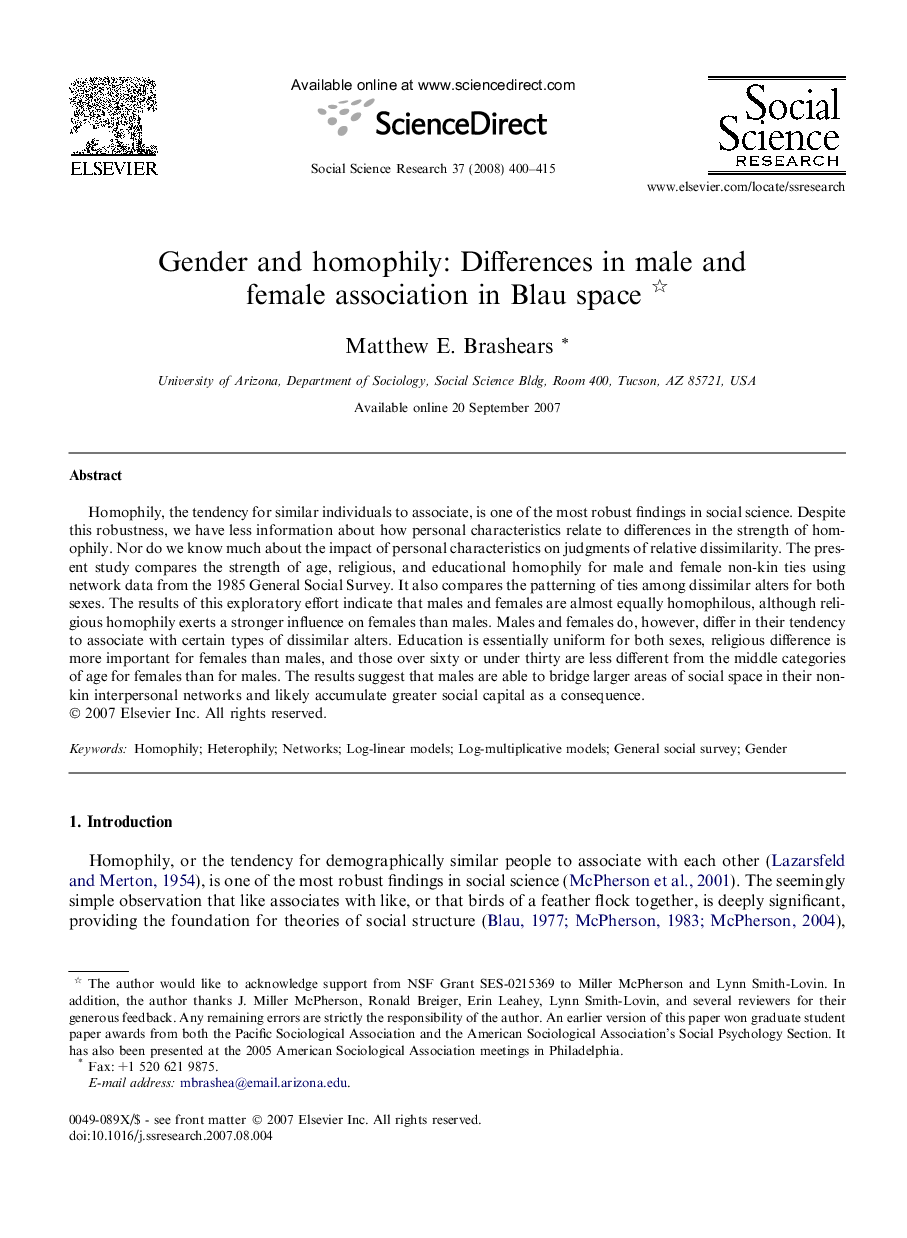| کد مقاله | کد نشریه | سال انتشار | مقاله انگلیسی | نسخه تمام متن |
|---|---|---|---|---|
| 956495 | 928340 | 2008 | 16 صفحه PDF | دانلود رایگان |

Homophily, the tendency for similar individuals to associate, is one of the most robust findings in social science. Despite this robustness, we have less information about how personal characteristics relate to differences in the strength of homophily. Nor do we know much about the impact of personal characteristics on judgments of relative dissimilarity. The present study compares the strength of age, religious, and educational homophily for male and female non-kin ties using network data from the 1985 General Social Survey. It also compares the patterning of ties among dissimilar alters for both sexes. The results of this exploratory effort indicate that males and females are almost equally homophilous, although religious homophily exerts a stronger influence on females than males. Males and females do, however, differ in their tendency to associate with certain types of dissimilar alters. Education is essentially uniform for both sexes, religious difference is more important for females than males, and those over sixty or under thirty are less different from the middle categories of age for females than for males. The results suggest that males are able to bridge larger areas of social space in their non-kin interpersonal networks and likely accumulate greater social capital as a consequence.
Journal: Social Science Research - Volume 37, Issue 2, June 2008, Pages 400–415